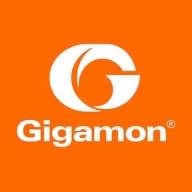

Splunk AppDynamics and Gigamon Deep Observability Pipeline compete in the network and application performance monitoring category. AppDynamics appears to have an upper hand due to its comprehensive insights into application performance and strong customer support, although it is considered more expensive.
Features: Splunk AppDynamics provides comprehensive insights emphasizing graphs, JVM health, and application performance. Its notable features include ease of use, minimal configuration for topology monitoring, and live reporting for proactive issue identification. Gigamon Deep Observability Pipeline focuses on network traffic analysis, offering packet-level insights and specific network issue features.
Room for Improvement: AppDynamics could enhance integration with other monitoring systems, network monitoring, and create more intuitive dashboards. There is also a call for improved deployment processes and enriched data analytics. Gigamon users highlight improvements needed in GUI design, expanded cloud monitoring capabilities, and forming a more comprehensive visibility suite.
Ease of Deployment and Customer Service: Splunk AppDynamics is versatile across environments from Public Cloud to On-premises, recognized for rapid deployment and responsive customer support. In contrast, Gigamon primarily supports On-premises setups, with some users facing deployment challenges, but find community and customer support satisfactory.
Pricing and ROI: AppDynamics is seen as costly with complex pricing models, especially for enterprise-level customizations. However, it provides ROI through enhanced user experiences and operational efficiencies. Gigamon offers a more straightforward pricing model that is considered reasonable compared to higher-priced competitors.
The customer service and support are helpful and responsive.
We have reached maximum capacity in our tier, and extending capacity has not been cost-effective from Splunk's perspective.
I did not find any Docker solution available with it, and a separate instance has to be installed.
It is necessary to conduct appropriate testing before deploying them in production to prevent potential outages.
I can rate it nine out of ten.
Splunk AppDynamics provides an end-to-end view of the application but misses the infrastructure part, which is crucial.
If AppDynamics could develop a means to monitor without an agent, it could significantly improve application performance and reduce potential problems.
Customers have to pay a premium price, however, they receive considerable value from the product.
All these solutions at the moment are cheap, but it is like paying for insurance; you pay insurance to avoid major damage.
What I like the most about Splunk AppDynamics is the end-to-end observability for the application, along with traces.
The feature that I appreciate in AppDynamics Browser Real-User Monitoring is the intuitive and user-friendly dynamic mapping it creates for workflows.
The real-time feature provides me with insights into what's happening.


Gigamon Deep Observability Pipeline is a comprehensive network visibility solution that provides real-time insights into network traffic. It offers SSL inspection and mobile network monitoring for traffic monitoring purposes. The solution optimizes networks, aids in security inspection, and improves firewall performance. It is praised for its performance, power, straightforward integration, stability, and ease of initial setup.
With Gigamon, organizations can gain complete visibility into their network traffic, identify potential threats, and take proactive measures to prevent them. The solution is ideal for organizations of all sizes, including enterprises, service providers, and government agencies.
Splunk AppDynamics enhances application performance monitoring with advanced diagnostics and real-time insights, offering seamless end-to-end transaction tracking and infrastructure visibility.
AppDynamics provides critical tools for businesses to analyze application behavior and performance. Through innovative features like transaction snapshot analysis and adaptable dashboards, users can quickly identify and address issues, ensuring high levels of system uptime and efficiency. It is designed to support complex environments including Kubernetes and AWS, enhancing user experience by detecting performance issues early. Despite needing improvements in network monitoring and integration, it remains a robust option for tracking application health.
What are the key features of AppDynamics?In industries like financial services and e-commerce, AppDynamics facilitates performance tracking across distributed systems, optimizing infrastructure to meet consumer demands. It excels in environments needing precise transaction monitoring and is pivotal in delivering high value and satisfaction.
We monitor all Application Performance Monitoring (APM) and Observability reviews to prevent fraudulent reviews and keep review quality high. We do not post reviews by company employees or direct competitors. We validate each review for authenticity via cross-reference with LinkedIn, and personal follow-up with the reviewer when necessary.